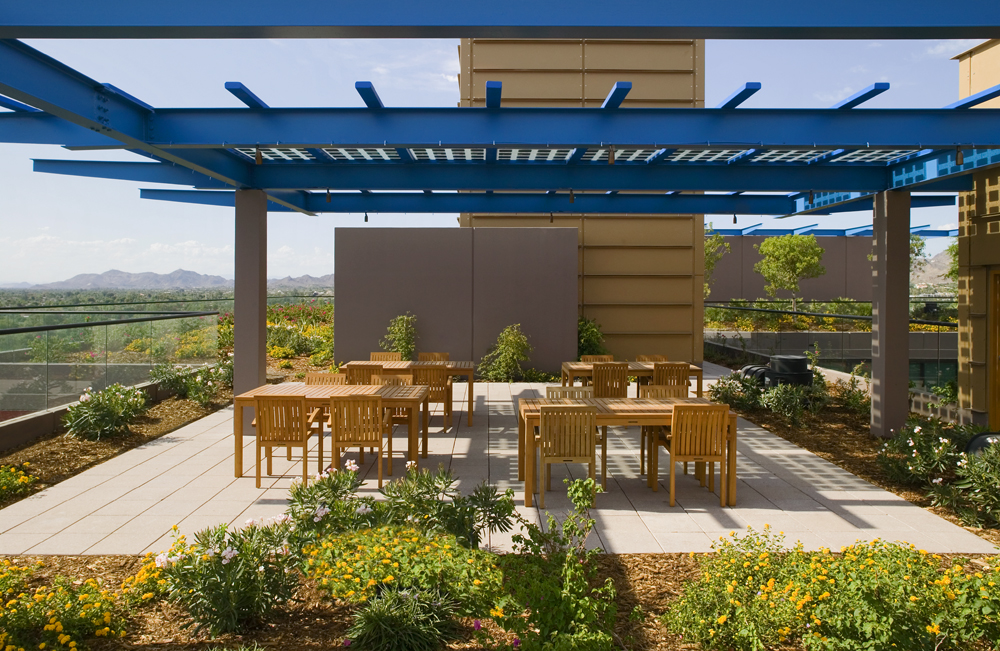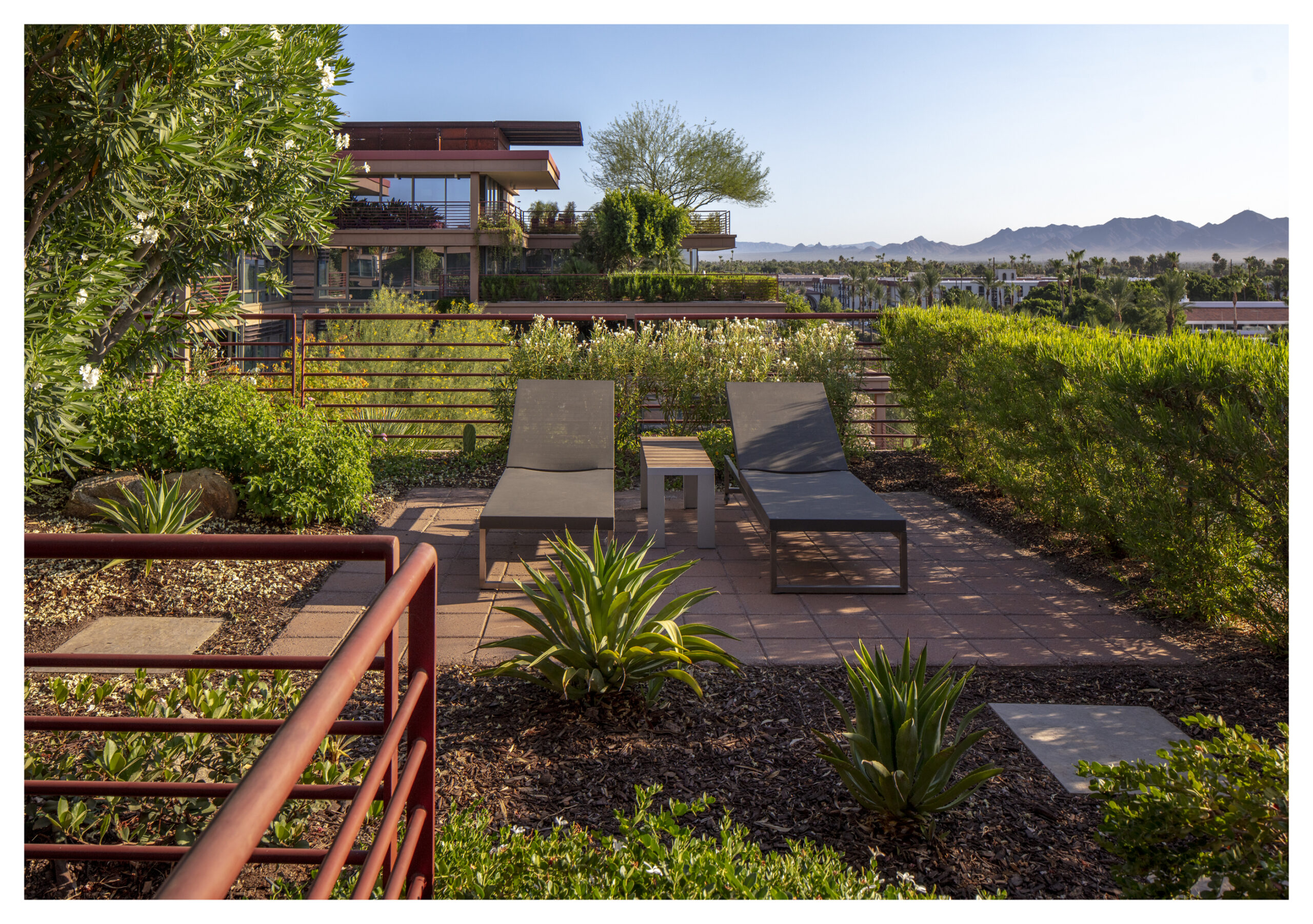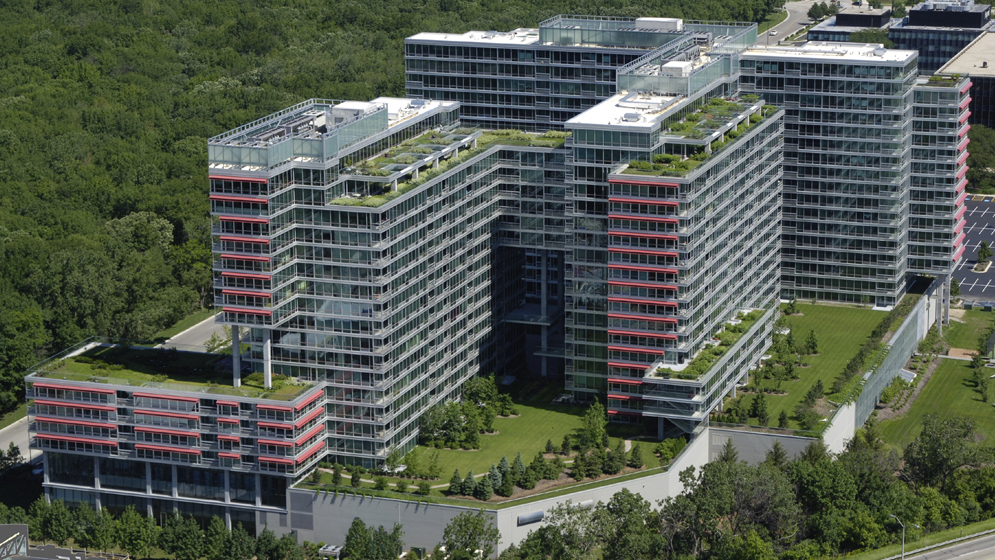A cornerstone of Optima design is the integration of sustainable and enjoyable green roofs. Since our inception, we’ve honed our techniques and evolved our green roofs to be cutting edge additions to each community and its environment. As we reflect on the growth of our own approach to the craft, we’re reflecting on green roof evolution overall with a brief history.

A Quick Background on the Green Roof
A green roof (also sometimes called a living roof) is a roof of a building that is partially or completely covered with vegetation. This vegetation is often supported with a growing medium and planted over a waterproofing membrane, and can include additional layers such as a root barrier, drainage and irrigation systems as more complex components. Green roofs are aesthetic and also highly functional building components, serving to absorb rainwater, provide insulation, create a habitat for wildlife, lower urban air temperatures and mitigate the heat island effect.

A Brief History of the Green Roof
Green roofs date back thousands of years. In ancient times, green roof structures began as sod roofs above caves, with “rooftop” earth and plantlife used for agricultural, dwelling and ceremonial purposes. The downfall of these sod roofs was a lack of protection against burrowing animals and lack of waterproofing ability. Inarguably, the most famous (and most sophisticated) ancient green roofs were the Hanging Gardens of Babylon, one of the Seven Wonders of the Ancient World, constructed around 500 B.C. Built over arched stone beams, the hanging gardens were indeed waterproofed by the inventive layering of reeds and thick tar.
Modern green roof technology blossomed in the 1960s, when Germany pioneered new, reliable technology that provided sophisticated irrigation and protection against roof ingress. With its invention, Germany was able to market and develop the new green roof technology on a large scale like never seen before.
There are two types of green roofs: intensive and extensive. Intensive green roofs have deep soil layers, widely varied plantlife and increased weight-bearing and stress load (therefore requiring higher maintenance). Extensive green roofs have thin soil depth and less layers, a simplicity that allows for easier maintenance and makes them the more accessible option. In the 1980s, the widespread introduction of extensive green roof technology further propelled the practice. The dynamic and customizable technology means that buildings have the option of choosing which green roof is right for them, and therefore a larger population can take part in the sustainable practice of growing green roofs.
Green roofs have certainly evolved since their inception, and we can’t wait to see what new innovations in the coming years will bring for design, architecture and sustainability.

